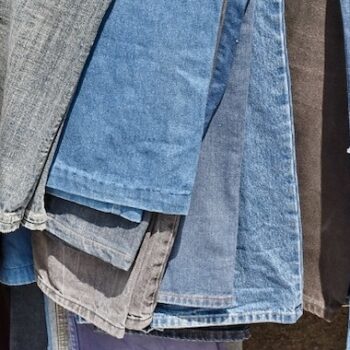Can you recycle clothes and the Mid-Autumn Festival in China
November 1, 2025Can you recycle clothes and the Mid-Autumn Festival in China. The Mid-Autumn Festival is one of those beautiful traditions in China that brings people together: family reunions, moon gazing, eating mooncakes, lighting lanterns, enjoying autumn’s cooler evenings. It’s a time for warmth, reflection, and sharing. But like many traditional festivals, the Mid-Autumn Festival is also facing modern challenges. One of those big ones being environmental impact. If we care about nature, we also protect the things we care about culturally, and that includes this festival. The more we make it sustainable, the more it can continue flourishing into the future in ways that feel authentic and full of meaning.
So, how does protecting the environment help preserve festivals like Mid-Autumn? First, environmental health. Clean air, clean skies, less pollution means people can fully enjoy one of the festival’s most important parts: watching the full moon in all its glory. If there’s smog, haze, or excessive lighting, that experience is dulled. Additionally, many traditions rely on natural materials like wood, paper, natural fibres, plants, bamboo, etc. Overuse or waste of those harms both the environment and the sustainability of craftspeople who supply them. Also, excessive packaging, single-use plastics, and waste not only strain landfills but also shift the focus away from what the festival is really about: reunion, stories, tradition, and beauty, rather than just display or show.
Thankfully, lots of people, including organisers, households, and businesses are taking steps (some small, some more ambitious) to make Mid-Autumn more environmentally friendly.

Mid autumn festival Image G Jones using AI
Can you recycle clothes – Regulating packaging and reducing excess
Mooncakes are central to the festival, and so is their packaging. In recent years, Chinese regulators have introduced rules to limit how over-the-top packaging can be. For instance, the State Administration for Market Regulation (along with other bodies) put in tighter regulations starting about 2022-2023 to curb “excessive packaging” of festive foods, including mooncakes. The rules reduce the allowed number of layers of wrapping and limit unnecessary space within the boxes. There are brands using FSC-certified paper, soy-ink printing, smaller “just-fit” boxes, removing unnecessary inner trays or dividers, downsizing metal boxes, etc. These changes reduce resource use, materials, and waste.
Recycling mooncake boxes and campaigns
After the festival, there’s a lot of mooncake boxes lying around. In places like Hong Kong, there are long-running “mooncake box recycling” campaigns. For example, a company called Maxim’s has for many years run a “Project Green Moon – Mooncake Boxes Collection” campaign. They set up hundreds of collection points so people can return or recycle their boxes rather than just disposing of them. There have been also been surveys and environmental groups drawing attention to how many mooncakes (or mooncake boxes) go uneaten or get thrown away. This pushes both consumers and producers to be more mindful.
Can you recycle clothes – Making reusable or handcrafted lanterns
Lanterns are beloved: beautiful lights, shapes, colours. But many lanterns (especially cheaply made ones) involve plastic, non-recyclable components, or battery-powered lights that aren’t built to last. A greener trend is to make lanterns from more sustainable natural materials like bamboo, paper, or even leftover craft materials. They can also be designed to be reused across years. Or choosing LED lights or even candlelight where safe rather than single-use plastic bits. Some communities and schools run workshops to teach people to make their own eco-friendly lanterns from recycled bottles, paper, etc., which keeps the craft alive but also reduces waste.
Raising awareness among consumers
A part of the change has been people thinking more carefully about what they buy. Do I really need fancy boxes, gift boxes with lots of wrapping, high cost packaging? Are there mooncakes with simpler or biodegradable packaging? Some consumers prefer less packaging even if gift-giving norms sometimes push for extravagance. Because of this, some producers respond by offering simpler versions or letting customers choose less packaging. Regulations help this by setting legal bounds, but consumer choice is also powerful.
Can you recycle clothes – Festival organisers and cities aiming for greener festivals
Some cities that host major festival events try to organise them in ways that are lower-carbon: managing waste, providing recycling bins, encouraging local seasonal produce for festival meals, reducing lighting pollution, and avoiding large numbers of disposable items. For example, in the city of Yibin, which hosted a Mid-Autumn Festival Gala, authorities emphasised green development, low carbon, circular economy approaches in their event planning.
These efforts matter because preserving a festival is not just keeping up the outward forms (mooncakes, lanterns, etc.), but keeping alive what it feels like: sincerity, beauty, connection with family, with culture, with nature. If environmental harm causes air pollution, plastic waste, or resource depletion, part of the magic gets lost. But by making mindful choices by regulators, businesses, and each of us who celebrate, we protect not only the earth but the heart of Mid-Autumn.
Can you recycle clothes?
Clothing is a part of all of this. Wearing traditional garb is not necessary but people like to dress up, of course. However, searching for second hand or vintage clothes makes the occasion more environmentally conscious.
Recycling centers help reduce greenhouse gases by supporting a structured recycling program. However, textile waste remains a huge issue, especially with the rise of fast fashion. Textile recycling initiatives are often aided by organisations like the Salvation Army. They address the fact that only about 15 percent of unwanted clothing is currently diverted from disposal. Many people turn to thrift stores to extend the life of garments. Especially those made from natural fiber, while others contribute through clothes donations at a nearby recycling location. Yet millions of tons of textiles still end up in landfill every year, including everyday items like blue jeans. To counter this, communities encourage the use of recycling bins specifically designated for pounds of textiles.





